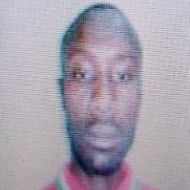International Journal of Mathematical Sciences and Computing (IJMSC)
IJMSC Vol. 11, No. 1, 8 Apr. 2025
Cover page and Table of Contents: PDF (size: 610KB)
Derivation and Implementation of the Collocation Methods for Solving Single and Multi Time-Fractional Order Differential Equations
PDF (610KB), PP.37-54
Views: 0 Downloads: 0
Author(s)
Index Terms
Standard Collocation, Perturbed Collocation, Fractional-Order Differential Equations (Fodes), Orthogonal Polynomials, Numerical Examples
Abstract
Standard collocation (SCM) and perturbed collocation (PCM) are utilized as effective numerical techniques for solving fractional-order differential equations (FODEs) which focus on constructing orthogonal polynomials to serve as basis functions for approximating the solutions to these equations. The approach began by assuming an approximate solution, expressed in the constructed orthogonal polynomials. These assumed solutions were then substituted into the original FODEs. Following this, the problem was converted into a system of algebraic linear equations by collocating the equations at evenly spaced interior points. Numerical examples and the results indicated that the SCM and PCM are easy, efficient, and in good agreement compared with some existing methods and the results presented in the tables and graphs unequivocally demonstrate the efficacy of the proposed methods in solving fractional-order differential equations, yielding solutions of remarkable accuracy. However, the SCM and PCM exhibit comparable accuracy, making it difficult to identify a single superior approach, we conclude that both the proposed methods are effective and viable options for solving fractional order differential equations.
Cite This Paper
Falade Kazeem Iyanda, Muhammad Yusuf Muhammad, Taiwo Omotayo Adebayo, Adeyemo Kolawole Adefemi, "Derivation and Implementation of the Collocation Methods for Solving Single and Multi Time-Fractional Order Differential Equations", International Journal of Mathematical Sciences and Computing(IJMSC), Vol.11, No.1, pp. 37-54, 2025. DOI: 10.5815/ijmsc.2025.01.03
Reference
[1]A. Atangana, N. Bildik, “The use of fractional order derivative to predict the groundwater flow”, Mathematical Problems in Engineering, Article ID 543026, 1-9, 2013.
[2]S.E Vedat, M. Shaher, O. Zaid, “Application of generalized differential transform method to multi-order fractional differential equations”, Communications in Nonlinear Science and Numerical Simulation 13: 1642-1654, 2007.
[3]M. Grover, A.K Tomer, A, “Numerical approach to differential equations of fractional order Bratu-type equations by differential transform method”, Global Journal of Pure and Applied Mathematics, Vol. 13, No. 9, 2017.
[4]P. Mokhtary, F. Ghoreishi, “Srivastava, H.M., The Müntz-Legendre Tau method for fractional differential equations”, Appl Math Model, 40(2): 671-684, 2016.
[5]G.R Khoshsiar, M. Fardi, M. Ghasemi, “Solving multi-order fractional differential equations by reproducing kernel Hilbert space method”, Comput Methods Differ Equation, 170-190, 2016.
[6]M. Pakdaman, A. Ahmadian, S. Effati, S. Salahshour, Baleanu., “Solving differential equations of fractional order using an optimization technique based on training artificial neural network”, Appl Math Comput; 293, 81-95, 2017.
[7]W.M Abd-Elhameed, Y. Youssri, “Generalized Lucas polynomial sequence approach for fractional differential equations”, Nonlinear Dynam;89: 1341-1355, 2017.
[8]A. Dabiri, E.A Butcher, “Efficient modified Chebyshev differentiation matrices for fractional differential equations”, Commun Nonlinear Science Numerical Simulation; 50: 284-310, 2017.
[9]M.S Heris, M. Javidi, “On fractional backward differential formulas for fractional delay differential equations with periodic and 34 anti-periodic conditions”, Appl. Numer. Math. 118: 203-220, 2017.
[10]Saad, Al-Shomrani., “An application of homotopy analysis transform method for Riccati differential equation of fractional order”, Journal of Fractional Calculus and Applications Vol. 7(1): 61-72, 2016.
[11]K. I. Falade, A. Adesina, M. Nuru, A. Raifu, M. Abdullahi, “Analytical approximate solutions of nonlinear fractional-order nonhomogeneous differential equations”, Diyala Journal of Engineering Sciences Vol (15) No 3: 94-105, 2022.
[12]F. B. Zahra, J. Mohammad, “Higher order methods for fractional differential equation based on fractional backward differentiation formula of order three”, Mathematics and Computers in Simulation,1-19, 2019.
[13]A. Z. Nur., A. M. Zanariah, K. Adem, R. Faranak, “Numerical solutions of fractional differential equations by using fractional explicit adams method”, Mathematics, 8: 1-23, 2020.
[14]R. Shivani, G. Sandipan, K. S. Dileep, “Numerical solution of the multi-order fractional differential equation using Legendre wavelets and eigenfunction approach”, Partial Differential Equations in Applied Mathematics, 10: 1-7, 2024.
[15]Ali, Raza., T. Imran., Abdon, A., Muhammad, B. R,“Numerical study of multi-order fractional differential equations with constant and variable coefficients”, 608-620, 2024.
[16]A. Dalal, M. Dalal, A. Hashim, “Adomian decomposition method for solving fractional time-Klein-Gordon equations using maple”, Applied Mathematics, 14: 411-418, 2024.
[17]Podlubny, “Fractional Differential Equations”, Academic, Press, San Diego, CA, USA, 1999.
[18]V. K Srivastava, M. K Awasthi, S. Kumar, “Analytical approximations of two- and three-dimensional time-fractional telegraphic equation by reduced differential transform method”, Egyptian Journal of Basic and Applied Sciences, vol. 1: 60-66, 2014.
[19]S. H. Afrah, “Numerical solution of the bagley-torvik equation using the integer-order derivatives expansion”, Science Journal of University of Zakho. 6(2): 64-69, 2018.
[20]N.J Ford, J. A. Connolly, “Comparison of numerical methods for fractional differential equations”, Commun. Pure Appl. Anal. 5 (2): 1-16, 2006.
[21]G. Hui, “On an orthonormal basis for tetrahedra invariant under S3”, Master’s thesis, San Jose State University, 1-9, 1995.



